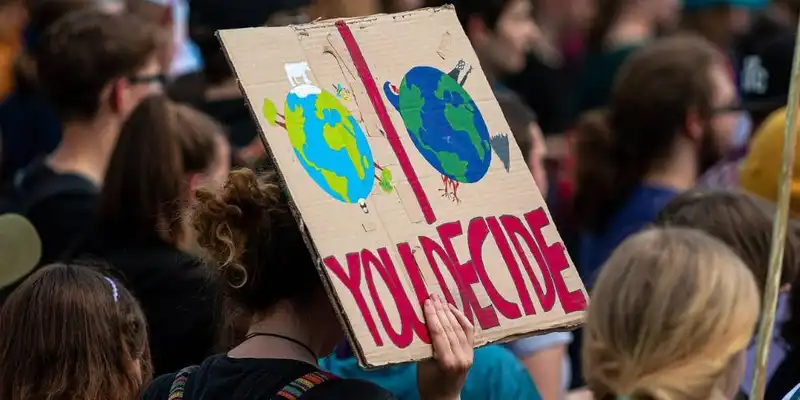The Impact That Food Waste Has on Climate Change
Why is Food Wasted?
Food waste refers to the decrease in the mass or nutritional value of edible food products resulting from the decisions and actions of consumers, food service providers, and retailers.
Common situations where food waste and climate change consequences occur include-
- Discarding massive amounts of leftover edible food from kitchens
- Encouraging consumers to purchase more than they can eat through incentives such as all-you-can-eat buffets and buy-one-get-one-free deals
- Discarding of fresh produce that is not aesthetically pleasing
- Misinterpretation of best by, sell by, and use by labels resulting in disposal of edible foods
The American Impact
The United States wastes the most food per capita, with an average of 209.7 pounds. It is estimated that 40% of food that is grown, processed, and transported in the United States will never be eaten by consumers with 43% of food in American homes thrown away.
A contributing factor to this problem is that the United States does not possess strict policies or actionable social awareness surrounding the waste of food. Americans express concern about reducing food waste, with 75% of respondents rating the issue as important or very important to them. In 2015, the United States Department of Agriculture and the United States Environmental Protection Agency embraced federal targets to cut food waste by 50% by 2030.
Social and societal attitudes clearly reflect a willingness and motivation to decrease wastefulness. However, without education and resources, these well-meant intentions may also be wasted. Establishing food preservation practices will benefit not only the social wellbeing of the food industry businesses but also the larger community that they serve. This butterfly effect very well has the potential to change the food waste and climate change impact of not only America but the rest of the world.
The Global Impact
Food waste causes exorbitant environmental consequences that cannot be ignored, ranging from increased greenhouse gas emissions to the squandering of precious natural resources. It is absolutely essential for the health and preservation of our environment that we decrease and work towards eliminating food loss and waste globally.
Greenhouse gas emissions absorb infrared radiation and heat up the earth's atmosphere resulting in global warming and climate change. Landfills produce a large amount of methane, which is many times more powerful than carbon dioxide. The carbon footprint of food waste results in 3.3 billion tons of CO2 equivalent each year.
The loss and waste of food also deplete our planet's most precious resources. Agriculture claims 70% of the water used around the world and roughly 1/3rd of the world's agricultural land is used to grow food that is wasted.
While developing countries are more likely to lose food at the production level due to infrastructure and harvesting techniques, middle and higher-income regions show more waste at the consumer level due to poor business practices and food social norms. The further down the food chain that food is lost or wasted, the greater the environmental impact. Our need as individuals, nations, and as a global community to change our practices is a pressing issue and social responsibility that can no longer be ignored.
What We Can Do

Food industry professionals have a social responsibility to do their part in decreasing their establishment's eco-footprint. Restaurants in the United States generate anywhere from 22 to 33 billion pounds of food waste per year. A single restaurant can waste approximately 25,000 to 75,000 pounds of food every year. 85% of unused food in a typical American restaurant is thrown away, with only a small percent recycled or donated to those in need.
The main reasons for this expensive waste include oversized portions, management inflexibility, and excessive menu options. Portion sizes, often two to eight times larger than the USDA or FDA serving size suggestions, can be difficult for your clients to consume in one sitting and encourage a social culture of overindulgence and wastefulness.
On average, 17% of meals are left uneaten with 55% of these edible leftovers left behind at the restaurant for disposal. Kitchen culture only amplifies this problem, with behaviors including over-preparation of food, not finding ways to incorporate food scraps and trimmings, and improper ingredient storage.
Food providers need to be especially cognizant of how their establishments contribute to food wastage. Food industry professionals are changing the industry standard by making sustainable food choices that reduce food waste, greenhouse gas emissions, and climate change impact.
Conclusion
- Although 820 million people suffer from hunger, 1/3rd of food produced globally is lost or wasted
- The United States wastes the most food per capita, with an average of 209.7 pounds. It is estimated that 40% of food that is grown, processed, and transported in the United States will never be eaten by consumers with 43% of food in American homes thrown away
- Americans express concern about reducing food waste, with 75% of respondents rating the issue as important or very important to them
- Food waste causes exorbitant environmental consequences that cannot be ignored, ranging from increased greenhouse gas emissions to the squandering of precious natural resources
- Greenhouse gas emissions absorb infrared radiation and heat up the earth's atmosphere resulting in global warming and climate change. Landfills produce a large amount of methane, which is many times more powerful than carbon dioxide. The carbon footprint of food waste results in 3.3 billion tons of CO2 equivalent each year
- Restaurants in the United States generate anywhere from 22 to 33 billion pounds of food waste per year. A single restaurant can waste approximately 25,000 to 75,000 pounds of food every year. 85% of unused food in a typical American restaurant is thrown away, with only a small percent recycled or donated to those in need
- Food industry professionals are changing the industry standard by making sustainable food choices that reduce food waste, greenhouse gas emissions, and climate change impact

